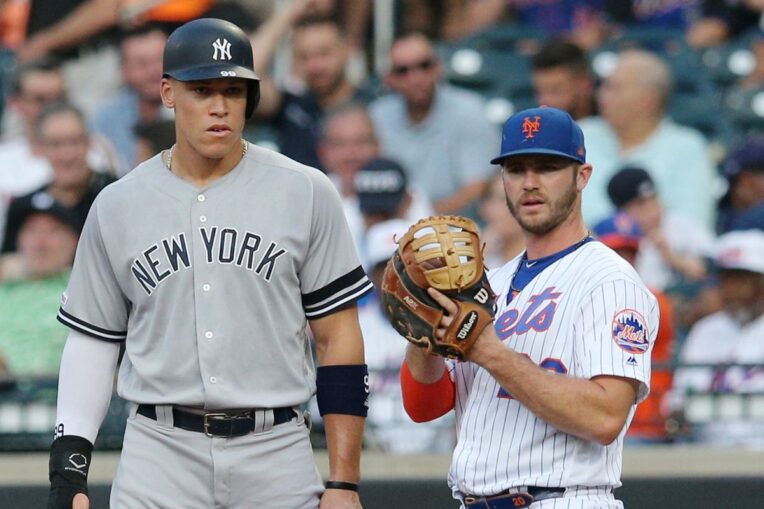
As the dust settles following a disappointing end to their 2022 season, the New York Mets are set to enter a crucial offseason that has the potential to change the look and feel of the roster. They will also have a host of needs that are likely to be addressed and adding power to the lineup is should certainly be one of them.
It would be unfair to pin all of the shortcomings of this year’s team onto the lack of power they possessed, but at the same time it was a factor. And while the Mets finished third in the league as a team in wRC+ and tied for fifth in runs scored, they did so in spite of that missing element. They closed out the year with just 171 home runs, which tied for 15th in the league and placed them with the fourth-least among playoff teams. Building off of that, the Mets isolated power percentage, which is intended to measure raw power, ranked 16th in the league at .153.
Another group of statistics that sheds light on the importance of power as well as a reason behind the Mets late-season struggles is quality of contact. The team finished with the fifth-worst hard-hit rate in the league at 28.6% according to Fangraphs while also placing in the bottom ten of Baseball Savant’s calculation in the same department. New York also barely avoided the bottom ten in average exit velocity and barrel percentage, and with the team ranking in the top three for batting average and strikeout percentage, it seems apparent that their contact-focused approach just simply isn’t going to cut it in today’s league.
Meanwhile, each of the four teams with a bye this postseason ranks among the leaders in each of those stats, meaning the trend lends credence to the fact that building an offense from a power-oriented perspective is much more likely to consistently produce and be dependable in key spots.
It would be tough for the Mets to do a complete 180 and reverse their offensive identity in the course of one offseason, particularly because only one starting position player in Brandon Nimmo is set to reach free agency and it’s a realistic expectation to hold that he could be back in the mix next year. That means that the coaching staff and players are going to have to switch up something about their approach at the plate, or the front office will have to get creative in acquiring and trading guys to better fit the modern-day mold. Perhaps prospects such as Brett Baty and Francisco Álvarez can step into full time roles next season and add full-time needed thump as well, but that’s asking a lot.
A particular issue for the Mets in the power department during the 2022 season was the combined work of their designated hitters with only 17 home runs, six of which came from first baseman Pete Alonso and three more from Giants’ infielder J.D. Davis.
Of course, there’s a guy named Aaron Judge coming off setting the American League record for home runs that will be a free agent. Outside of Judge, however, the upcoming free market is light on power bats.
Either way, the objective for fixing the offensive deficiencies should be clear to all involved within the organization, and it’s imperative that the team’s power numbers go up across the board in 2023 and beyond.















